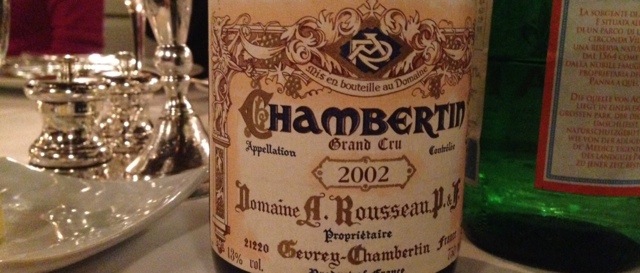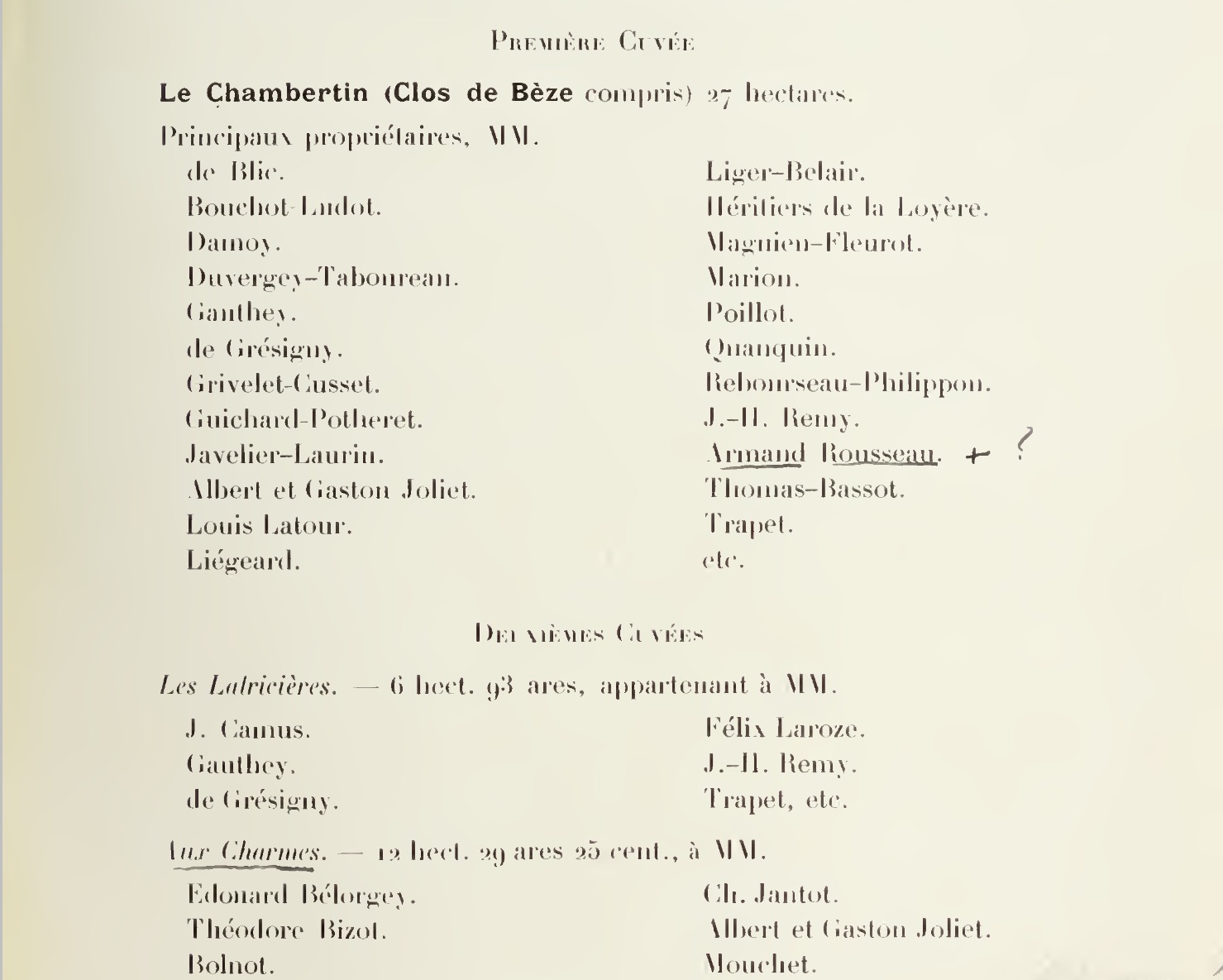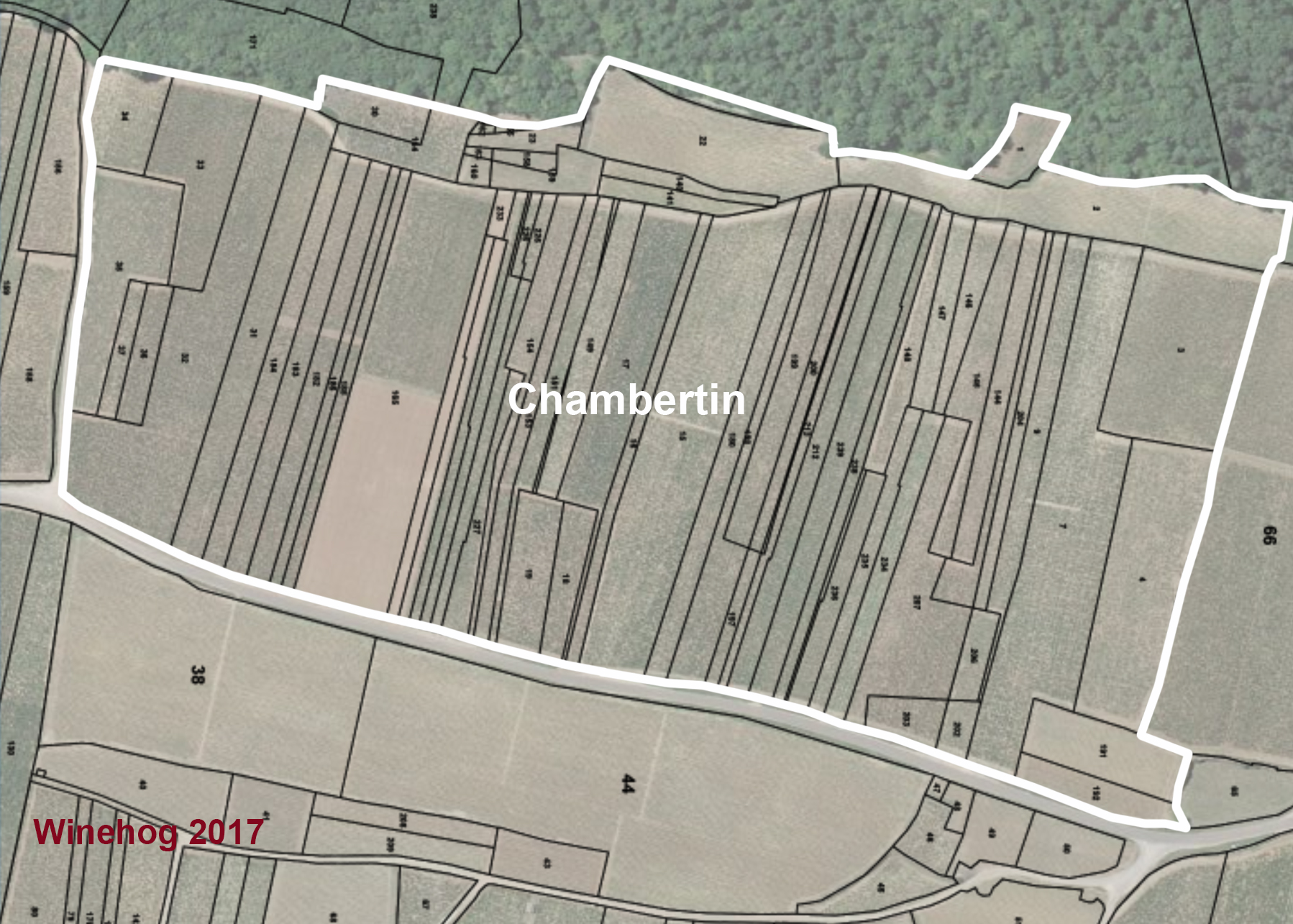Two words – Rousseau and Chambertin – expectations are building up, great wine ahead.
While Domaine Armand Rousseau is a legendary estate in Burgundy, the history of the family holdings on Chambertin is rather limited seen in a Burgundian timeframe, as the ownership dates back to the early 1920s.
Three great people, Armand Roussau, Charles Rousseau and Eric Rousseau have together created a great estate and a tremendous reputation for making some of the greatest of Burgundies – and have like no one else put Gevrey Chambertin on the map.
Armand Rousseau (1884 – 1959) inherited some vineyard plots when he turned 18 in 1902, and this was the foundation of the great domaine we find today at the bottom of the Clos Saint Jacques hill.
He came from a family of vignerons, coopers and local wine merchands, and additional vineyards follow when he married in 1909. This was also the time when the Rousseau estate was established at the current address.
Interestingly all this happened around the same time when on of the other great producers of Chambertin, Domaine Trapet, established itself in Gevrey-Chambertin after relocating from far away in Chambolle-Musigny.
The Rousseau holdings on Chambertin
After the marriage and after the war Armand Rousseau quickly began to expand the vineyard portfolio. According to the estate website plots in Charmes-Chambertin followed in 1919, plots in Clos de la Roche and Chambertin in 1920.
In fact my version of Rodier4 (1920) show that Rousseau was in fact alredy an owner of Chambertin in 1920 when this book was released in July 1920.
So in the very beginning of the 1920s Armand Rousseau had begun his quest of building one of the most famous estates in Burgundy.
In 1921 Armand Rousseau decidied to bottle most his own wines, and to sell these to local restaurants and connoisseurs, being advised by his friend Raymond Baudoin – the future founder of Revue de Vin de France. It should be noted that Revue de Vin de France was founded in 1927.
Over the years Armand Rousseau further extended the estate – Mazis Chambertin in 1937, Mazoyeres-Chambertin (now Charmes-Chambertin in 1940) and plots in Chambertin in 1956. In 1954 he also acquired an important part of Clos St. Jacques in the name of his son Charles Rousseau (1923 – 2016), who had joined him in 1945 after studying law in Dijon.
Armand Rousseau sadly passed away in a car accident in 1959, but his son Charles Rousseau continued to expand the holdings in Le Chambertin with additional plots in 1970, 1983 and 1994.
Charles Rousseau was a great man for the estate, as he not only expanded the vineyard holdings he also established the estate in the export markets – speaking both English and German – and created the world wide brand Domaine Rousseau is today.
Under his reign the estate was expanded with quite extensive holdings in Chambertin Clos de Bèze. In 1977 Charles Rousseau acquired the key part of Ruchottes-Chambertin and sort of completed the vineyard portfolio.
He was joined by his son Eric Rousseau in 1982, after he completed his studies at Lycée Agricole et Viticole of Mâcon Davayé and a one year of specialising in Oenology at the University of Dijon. Eric gradually took over with Charles Rousseau giving advice from his office just inside the gate. Charles Rousseau a great visionary and Burgundian sadly passed away in 2016 at age 93.
His son Eric Rousseau has continued his fathers quest for vineyards and in 2009 additional plots of Chambertin were added to the already sizeable holdings bringing the Rousseau Chambertin vineyards up to 2.55 ha – now the largest owner of Chambertin, after the Trapet estate was split in two around 1990.
Eric Rousseau has since 2012 been joined by his daughter Cyrielle Rousseau who has passed a DEUG in Geology, a license in Viticulture and has a diploma in oenology. So the future is already in place at Domaine Rousseau.
With history in place we can take a closer look at the Chambertin holdings of Domaine Rousseau.
Chambertin – the vineyard
The Chambertin vineyard is 12.90 ha and is sometimes seem in as one unit with Chambertin Clos de Bèze. Chambertin and Clos de Bèze are no doubt the two top terroirs of Gevrey-Chambertin, and while Chambertin is regarded as the top vineyard – Chambertin then could be described as the king – and Clos de Bèze is the queen … being a Dane I know how complex this can be!
Looking at the individual owners there can be style and quality differences between the Chambertin and the Clos de Bèze, and one could be prefered by some, whereas others see things differently. At Rousseau the Chambertin seems to be regarded at the top of the line, but the Clos de Bèze is not far behind and perhaps sometimes preferred due to it’s refinement and slightly more feminine style.
Down to basics and maps: The Chambertin vineyard is located between Chambertin Clos de Bèze and Latriciéres- Chambertin just above Charmes-Chambertin – see map below.
Taking a closer look at Chambertin we see a relatively large number of plots reflecting the arond 20 owners of Chambertin
Chambertin is more a owners vineyard – meaning there are less negociant bottlings of Chambertin than there is of Chambertin Clos de Bèze. Still the Chambertin ownership structure can be quite complex.
The Domaine Armand Rousseau holdings on Chambertin
As mentioned Domaine Armand Rousseau now owns 2.55 ha of Chambertin after the latest acquisition in 2009. The last acquisition was from Jean Claude Belland.
You need to login as a Premium subscriber to read the rest of this article. If you are not a Premium Subscriber, use the subscribe function and sign-up.
Related articles
- Terroir Insight: Domaine Armand Rousseau ChambertinTwo words – Rousseau and Chambertin – expectations are building up, great wine ahead. While Domaine Armand Rousseau is a legendary estate in Burgundy, the history of the family holdings on Chambertin is rather limited seen in a Burgundian timeframe, as the ownership dates back to the early 1920s. Three great people, Armand Roussau, Charles Rousseau and ...
- Terroir Insight: Domaine Armand Rousseau, Charmes-ChambertinThe portfolio of Domaine Armand Rousseau is large and prominent, including some of the best wines made in the Gevrey-Chambertin appellation. One wine is however somewhat overlooked and perhaps even a bit misunderstood and that is the Charmes-Chambertin. The Charmes-Chambertin is the entry level Grand Cru at Domaine Rousseau, and is – one could say – made ...
- Terroir Insight: Domaine Armand Rousseau Clos de la Roche (update)Gevrey-Chambertin is Rousseau and Domaine Armand Rousseau is Gevrey-Chambertin – to a large extend, as this fabulous and legendary estate have done so much to increase the fame and fortune of the appellation. But in all fairness Domaine Armand Rousseau also have a large Grand Cru outside the Gevrey appellation, and while it’s not as famours ...
- Terroir Insight: Domaine Rousseau, Chambertin Clos de BèzeChambertin or Clos de Bèze? .. a relevant question .. however the reply is fairly simple – both please! Rousseau is one of the only producers who have large holdings of both vineyards – and these holdings are amongst the very best within the respective appellations. I have already taken a closer look at the mighty Chambertin ...
- The other mysterious bottling from Domaine Armand RousseauBurgundy is a facinating place, and even very famous producers like Domaine Armand Rousseau have “secret” wines that are not sold commercially. We already covered the Gevrey-Chambertin Clos du Chateau, but there is actually another even more unknown Rousseau bottling … the Bourgogne Blanc. Domaine Armand Rousseau Bourgogne Blanc It appears that Domaine Rousseau produce a – presumably ...





 - A true vin d’émotion – a Burgundy of passion
- A true vin d’émotion – a Burgundy of passion - A truly hedonistic wine – lively and enjoyable
- A truly hedonistic wine – lively and enjoyable - A vivacious wine for pure indulgance
- A vivacious wine for pure indulgance - A potential vin d´émotion - frais et léger
- A potential vin d´émotion - frais et léger
Great Estate.